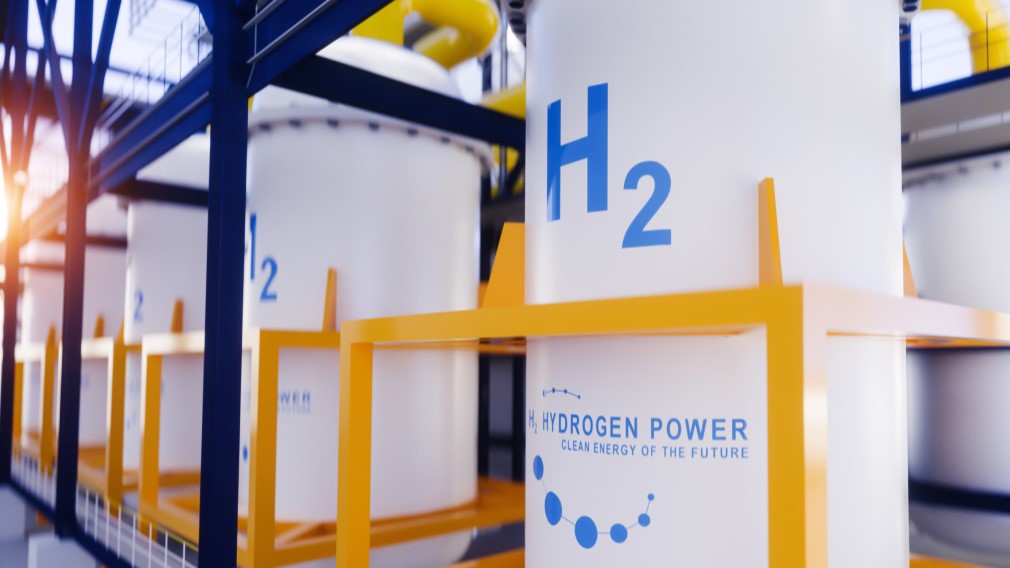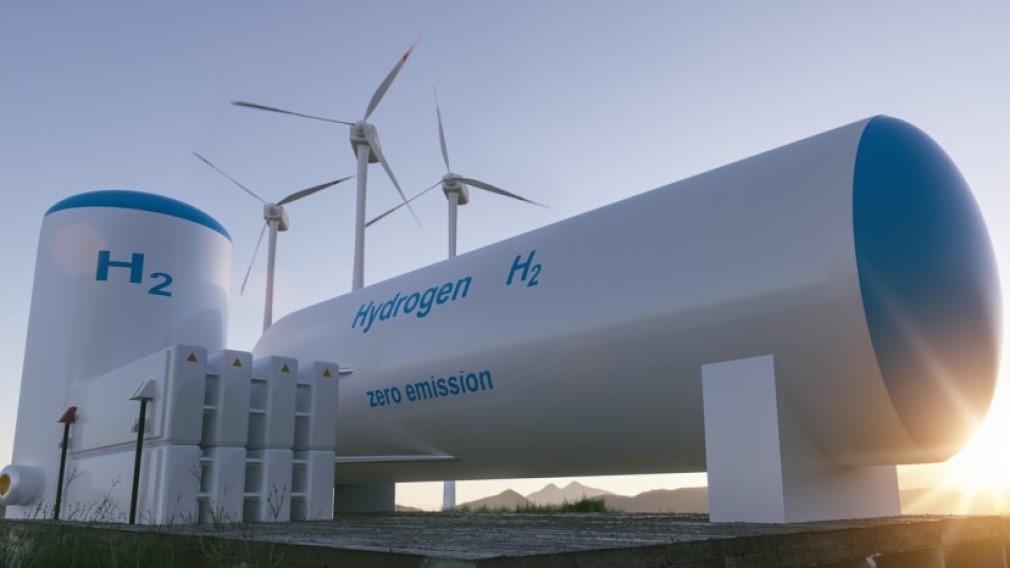Hydrogen’s central role in decarbonising Australia’s economy
Touting benefits of lower costs and greater energy security, Australia’s gas distributors explain their transition plans for a green hydrogen future and what needs to change to make it happen.

When most people think about decarbonising Australian households, they usually think of electrification.
But substituting natural gas with zero-emissions hydrogen is increasingly being considered as an opportunity to more quickly reduce the carbon footprint of the nation’s 10 million homes.
In fact, used in combination with electricity, hydrogen carries several advantages over full electrification, in particular that it is much lower cost than converting the entire household sector to electricity-only.
“We need to consider the possibility that hydrogen is a substitute for natural gas, rather than going the whole way electric,” says Aldo Tassone, Associate Director, Energy & Infrastructure at Westpac Institutional Bank.
“Hydrogen should be seen as part of the equation and complementary to electrification, rather than in the same bucket as fossil fuels.”
Hydrogen is a completely green fuel if it’s produced using renewable electricity and it doesn’t produce carbon when burned.
A wind or solar farm can be used to power an electrolyser, which splits water into its component parts of hydrogen and oxygen. When hydrogen is burned, that process is reversed and it combines with oxygen to produce water – its only by-product.
Westpac Institutional Bank is supporting its clients as they transition away from fossil fuels, including those in the gas sector. In fact, gas distributors are already working towards a hydrogen future.
Testing the mix on the front burner
Australian Gas Infrastructure Group (AGIG) has begun blending hydrogen with natural gas, which is used in exactly the same way as natural gas is today.
The gas infrastructure business – which distributes natural gas to more than 2 million residential, commercial and industrial customers around Australia – is testing how much hydrogen could be blended into the mix for current household appliances, with expectations it will be somewhere around 20-30 per cent.
Its Hydrogen Park South Australia project, for instance, is Australia’s largest electrolyser and the first to deliver a renewable hydrogen blend to customers on the existing gas network, with five per cent hydrogen gas supplied to 700 homes. Other projects underway are more ambitious.
The jump from blends of 20-30 per cent to 100 per cent can happen quite quickly, but ultimately require household hot water heaters, gas fireplaces and cooktops to be replaced with hydrogen-ready appliances.
AGIG Chief Executive Craig de Laine says that to drive the change, the industry needs a policy mandate for consumers to install these appliances. If that mandate were introduced in 2025, for instance, it wouldn’t be until 2040 that homes were ready for the switch over, because most gas appliances have a 15-year lifespan.
The switch to hydrogen is a long-term vision, with AGIG aiming to deliver at least 10 per cent renewable gas in its networks by 2030, full decarbonisation by 2050 at the latest – and by 2040 as a stretch.
It won’t be the first time Australia has changed its domestic gas mix, or the first-time hydrogen has been used in the home. In the 1960s, Australia underwent an uneventful transition to natural gas from town gas (gas manufactured from coal), which was made by heating coal and contained about 50 per cent hydrogen.
Like many other Australian gas suppliers, AGIG has been upgrading its network for the past two decades, replacing ageing mains pipes with polyethylene pipes, which are less prone to cracking and leaking.
“From an infrastructure perspective, we've already done the work we need to do to transition to a 100 per cent hydrogen network,” says de Laine.
A pipeline of benefits
A key advantage of using hydrogen is that the gas network – currently used for methane gas – is, in effect, like a giant battery and can help more efficiently use the existing renewable electricity generation. It can use wind and solar in the middle of the day or night, when demand is lowest, to run electrolysers to produce green hydrogen, which can then be used to heat homes and hot water and for cooking in the evening.
“When you start thinking about that, the benefits are quite phenomenal,” de Laine says.
“All of a sudden, you are more than doubling the market for renewable electricity and you're transitioning the whole concept of renewable electricity from being almost a non-flexible peak‑load type form of energy to a base load form of energy because you can use it in the form of hydrogen all the time.”
It would significantly reduce the cost of renewable electricity by getting more out of existing wind and solar generation and wouldn’t require so much new build of electricity infrastructure to meet the economy’s decarbonisation targets.
In fact, according to a Frontier Economics study in Victoria, which compares the cost of transitioning to electricity only with transitioning to electricity and gas, there’s a 50% saving in the second option.
David Gillespie, Chief Financial Officer of gas and electricity distribution and transmission company Jemena, says these lower transition costs should be factored in when people consider hydrogen as a future fuel source. Regulators should consider the investments of gas companies in upgrading their networks in their pricing determinations.
“The efficiency of storage of a thermal product and the energy efficiency it brings in terms of gas‑powered generation becomes a really interesting part of the conversation,” he says.
Heading off the challenge to lower costs
But hydrogen is currently still expensive.
“If I need to sell a cake for $10 but my ingredients cost me $20, then I've got a pretty challenging business model to try and underpin investment. That's broadly what's happening right now,” Gillespie says of hydrogen production.
The main cost is in the electrolysers, so there are major research and development efforts underway around the world to bring that cost down. If they are successful, hydrogen will have a much brighter future as a cost-effective part of the overall energy mix.
In the meantime, Gillespie would like to see governments introduce green gas targets to their energy policies, similar to the Renewable Energy Target which has so successfully driven renewable electricity production over the past two decades.
By promoting gas without mandating its role, governments are lessening the investment signals to the market to develop green hydrogen capability, he says.
Governments in other countries are also seeing the potential for green hydrogen in their energy transition and developing policies to support its contribution. Only this week lawmakers in the United States agreed to generous industry support provisions that would make their green hydrogen the cheapest in the world, representing a significant turning point for the industry.
Jemena plans to investigate how renewable gases such as hydrogen can be fully integrated into the existing gas networks and, in the meantime, is adding biogas to the energy mix, which Gillespie describes as a bridge to hydrogen. “Biogas today is economic, whereas hydrogen still has a way to go,” he says.
With the current global surge in natural gas prices, biogas can be produced at a “significant discount” to current gas prices. It is a gaseous fuel of primarily methane and carbon dioxide, produced by the fermentation of raw materials including agricultural waste, food waste and sewage.
Jemena, with its partners Sydney Water and ARENA, is building a biogas plant at the sewage works in Sydney’s Malabar, one of several biogas opportunities around the state. In NSW, there are at least 15 petajoules of potential biogas projects near to the distribution network, compared with Sydney’s annual household consumption of about 30 petajoules of gas.
There are other benefits as well, such as catering to the preference of consumers who use gas for cooking or heating.
Gillespie says Australia should start thinking more about using a mix of fuel sources, rather than just seeking to rely on electricity alone.
“It's not that you need to back one technology in this,” he says. “You can see a really plausible role for green gases in that mix to shore up the reliability of the energy system and do that more efficiently than current battery technology can.”
What are the key moves for Australia to become a hydrogen exporter?
Stay informed with Westpac IQ
Get the latest reports straight to your inbox.
Browse topics
Disclaimer
©2025 Westpac Banking Corporation ABN 33 007 457 141 (including where acting under any of its Westpac, St George, Bank of Melbourne or BankSA brands, collectively, “Westpac”). References to the “Westpac Group” are to Westpac and its subsidiaries and includes the directors, employees and representatives of Westpac and its subsidiaries.
Things you should know
We respect your privacy: You can view the New Zealand Privacy Policy here, or the Australian Group Privacy Statement here. Each time someone visits our site, data is captured so that we can accurately evaluate the quality of our content and make improvements for you. We may at times use technology to capture data about you to help us to better understand you and your needs, including potentially for the purposes of assessing your individual reading habits and interests to allow us to provide suggestions regarding other reading material which may be suitable for you.
This information, unless specifically indicated otherwise, is under copyright of the Westpac Group. None of the material, nor its contents, nor any copy of it, may be altered in any way, transmitted to, copied of distributed to any other party without the prior written permission of the Westpac Group.
Disclaimer
This information has been prepared by Westpac and is intended for information purposes only. It is not intended to reflect any recommendation or financial advice and investment decisions should not be based on it. This information does not constitute an offer, a solicitation of an offer, or an inducement to subscribe for, purchase or sell any financial instrument or to enter into a legally binding contract. To the extent that this information contains any general advice, it has been prepared without taking into account your objectives, financial situation or needs and before acting on it you should consider the appropriateness of the advice. Certain types of transactions, including those involving futures, options and high yield securities give rise to substantial risk and are not suitable for all investors. We recommend that you seek your own independent legal or financial advice before proceeding with any investment decision.
This information may contain material provided by third parties. While such material is published with the necessary permission none of Westpac or its related entities accepts any responsibility for the accuracy or completeness of any such material. Although we have made every effort to ensure this information is free from error, none of Westpac or its related entities warrants the accuracy, adequacy or completeness of this information, or otherwise endorses it in any way. Except where contrary to law, Westpac Group intend by this notice to exclude liability for this information. This information is subject to change without notice and none of Westpac or its related entities is under any obligation to update this information or correct any inaccuracy which may become apparent at a later date. This information may contain or incorporate by reference forward-looking statements. The words “believe”, “anticipate”, “expect”, “intend”, “plan”, “predict”, “continue”, “assume”, “positioned”, “may”, “will”, “should”, “shall”, “risk” and other similar expressions that are predictions of or indicate future events and future trends identify forward-looking statements. These forward-looking statements include all matters that are not historical facts. Past performance is not a reliable indicator of future performance, nor are forecasts of future performance. Whilst every effort has been taken to ensure that the assumptions on which any forecasts are based are reasonable, the forecasts may be affected by incorrect assumptions or by known or unknown risks and uncertainties. The ultimate outcomes may differ substantially from any forecasts.
Conflicts of Interest: In the normal course of offering banking products and services to its clients, the Westpac Group may act in several capacities (including issuer, market maker, underwriter, distributor, swap counterparty and calculation agent) simultaneously with respect to a financial instrument, giving rise to potential conflicts of interest which may impact the performance of a financial instrument. The Westpac Group may at any time transact or hold a position (including hedging and trading positions) for its own account or the account of a client in any financial instrument which may impact the performance of that financial instrument.
Author(s) disclaimer and declaration: The author(s) confirms that (a) no part of his/her compensation was, is, or will be, directly or indirectly, related to any views or (if applicable) recommendations expressed in this material; (b) this material accurately reflects his/her personal views about the financial products, companies or issuers (if applicable) and is based on sources reasonably believed to be reliable and accurate; (c) to the best of the author’s knowledge, they are not in receipt of inside information and this material does not contain inside information; and (d) no other part of the Westpac Group has made any attempt to influence this material.
Further important information regarding sustainability-related content: This material may contain statements relating to environmental, social and governance (ESG) topics. These are subject to known and unknown risks, and there are significant uncertainties, limitations, risks and assumptions in the metrics, modelling, data, scenarios, reporting and analysis on which the statements rely. In particular, these areas are rapidly evolving and maturing, and there are variations in approaches and common standards and practice, as well as uncertainty around future related policy and legislation. Some material may include information derived from publicly available sources that have not been independently verified. No representation or warranty is made as to the accuracy, completeness or reliability of the information. There is a risk that the analysis, estimates, judgements, assumptions, views, models, scenarios or projections used may turn out to be incorrect. These risks may cause actual outcomes to differ materially from those expressed or implied. The ESG-related statements in this material do not constitute advice, nor are they guarantees or predictions of future performance, and Westpac gives no representation, warranty or assurance (including as to the quality, accuracy or completeness of the statements). You should seek your own independent advice.
Additional country disclosures:
Australia: Westpac holds an Australian Financial Services Licence (No. 233714). You can access Westpac’s Financial Services Guide here or request a copy from your Westpac point of contact. To the extent that this information contains any general advice, it has been prepared without taking into account your objectives, financial situation or needs and before acting on it you should consider the appropriateness of the advice.
New Zealand: In New Zealand, Westpac Institutional Bank refers to the brand under which products and services are provided by either Westpac (NZ division) or Westpac New Zealand Limited (company number 1763882), the New Zealand incorporated subsidiary of Westpac ("WNZL"). Any product or service made available by WNZL does not represent an offer from Westpac or any of its subsidiaries (other than WNZL). Neither Westpac nor its other subsidiaries guarantee or otherwise support the performance of WNZL in respect of any such product. WNZL is not an authorised deposit-taking institution for the purposes of Australian prudential standards. The current disclosure statements for the New Zealand branch of Westpac and WNZL can be obtained at the internet address www.westpac.co.nz.
Singapore: This material has been prepared and issued for distribution in Singapore to institutional investors, accredited investors and expert investors (as defined in the applicable Singapore laws and regulations) only. Recipients of this material in Singapore should contact Westpac Singapore Branch in respect of any matters arising from, or in connection with, this material. Westpac Singapore Branch holds a wholesale banking licence and is subject to supervision by the Monetary Authority of Singapore.
Fiji: Unless otherwise specified, the products and services for Westpac Fiji are available from www.westpac.com.fj © Westpac Banking Corporation ABN 33 007 457 141. This information does not take your personal circumstances into account and before acting on it you should consider the appropriateness of the information for your financial situation. Westpac Banking Corporation ABN 33 007 457 141 is incorporated in NSW Australia and registered as a branch in Fiji. The liability of its members is limited.
Papua New Guinea: Unless otherwise specified, the products and services for Westpac PNG are available from www.westpac.com.pg © Westpac Banking Corporation ABN 33 007 457 141. This information does not take your personal circumstances into account and before acting on it you should consider the appropriateness of the information for your financial situation. Westpac Banking Corporation ABN 33 007 457 141 is incorporated in NSW Australia. Westpac is represented in Papua New Guinea by Westpac Bank - PNG - Limited. The liability of its members is limited.
U.S.: Westpac operates in the United States of America as a federally licensed branch, regulated by the Office of the Comptroller of the Currency. Westpac is also registered with the US Commodity Futures Trading Commission (“CFTC”) as a Swap Dealer, but is neither registered as, or affiliated with, a Futures Commission Merchant registered with the US CFTC. The services and products referenced above are not insured by the Federal Deposit Insurance Corporation (“FDIC”). Westpac Capital Markets, LLC (‘WCM’), a wholly-owned subsidiary of Westpac, is a broker-dealer registered under the U.S. Securities Exchange Act of 1934 (‘the Exchange Act’) and member of the Financial Industry Regulatory Authority (‘FINRA’). In accordance with APRA's Prudential Standard 222 'Association with Related Entities', Westpac does not stand behind WCM other than as provided for in certain legal agreements between Westpac and WCM and obligations of WCM do not represent liabilities of Westpac.
This communication is provided for distribution to U.S. institutional investors in reliance on the exemption from registration provided by Rule 15a-6 under the Exchange Act and is not subject to all of the independence and disclosure standards applicable to debt research reports prepared for retail investors in the United States. WCM is the U.S. distributor of this communication and accepts responsibility for the contents of this communication. Transactions by U.S. customers of any securities referenced herein should be effected through WCM. All disclaimers set out with respect to Westpac apply equally to WCM. If you would like to speak to someone regarding any security mentioned herein, please contact WCM on +1 212 389 1269. Investing in any non-U.S. securities or related financial instruments mentioned in this communication may present certain risks. The securities of non-U.S. issuers may not be registered with, or be subject to the regulations of, the SEC in the United States. Information on such non-U.S. securities or related financial instruments may be limited. Non-U.S. companies may not be subject to audit and reporting standards and regulatory requirements comparable to those in effect in the United States. The value of any investment or income from any securities or related derivative instruments denominated in a currency other than U.S. dollars is subject to exchange rate fluctuations that may have a positive or adverse effect on the value of or income from such securities or related derivative instruments.
The author of this communication is employed by Westpac and is not registered or qualified as a research analyst, representative, or associated person of WCM or any other U.S. broker-dealer under the rules of FINRA, any other U.S. self-regulatory organisation, or the laws, rules or regulations of any State. Unless otherwise specifically stated, the views expressed herein are solely those of the author and may differ from the information, views or analysis expressed by Westpac and/or its affiliates.
UK: The London branch of Westpac is authorised in the United Kingdom by the Prudential Regulation Authority (PRA) and is subject to regulation by the Financial Conduct Authority (FCA) and limited regulation by the PRA (Financial Services Register number: 124586). The London branch of Westpac is registered at Companies House as a branch established in the United Kingdom (Branch No. BR000106). Details about the extent of the regulation of Westpac’s London branch by the PRA are available from us on request.
This communication is not being made to or distributed to, and must not be passed on to, the general public in the United Kingdom. Rather, this communication is being made only to and is directed at (a) those persons falling within the definition of Investment Professionals (set out in Article 19(5) of the Financial Services and Markets Act 2000 (Financial Promotion) Order 2005 (the “Order”)); (b) those persons falling within the definition of high net worth companies, unincorporated associations etc. (set out in Article 49(2)of the Order; (c) other persons to whom it may lawfully be communicated in accordance with the Order or (d) any persons to whom it may otherwise lawfully be made (all such persons together being referred to as “relevant persons”). Any person who is not a relevant person should not act or rely on this communication or any of its contents. In the same way, the information contained in this communication is intended for “eligible counterparties” and “professional clients” as defined by the rules of the Financial Conduct Authority and is not intended for “retail clients”. Westpac expressly prohibits you from passing on the information in this communication to any third party.
European Economic Area (“EEA”): This material may be distributed to you by either: (i) Westpac directly, or (ii) Westpac Europe GmbH (“WEG”) under a sub-licensing arrangement. WEG has not edited or otherwise modified the content of this material. WEG is authorised in Germany by the Federal Financial Supervision Authority (‘BaFin’) and subject to its regulation. WEG’s supervisory authorities are BaFin and the German Federal Bank (‘Deutsche Bundesbank’). WEG is registered with the commercial register (‘Handelsregister’) of the local court of Frankfurt am Main under registration number HRB 118483. In accordance with APRA’s Prudential Standard 222 ‘Association with Related Entities’, Westpac does not stand behind WEG other than as provided for in certain legal agreements (a risk transfer, sub-participation and collateral agreement) between Westpac and WEG and obligations of WEG do not represent liabilities of Westpac. Any product or service made available by WEG does not represent an offer from Westpac or any of its subsidiaries (other than WEG). All disclaimers set out with respect to Westpac apply equally to WEG.
This communication is not intended for distribution to, or use by any person or entity in any jurisdiction or country where such distribution or use would be contrary to local law or regulation.
This communication contains general commentary, research, and market colour. The communication does not constitute investment advice. The material may contain an ‘investment recommendation’ and/or ‘information recommending or suggesting an investment’, both as defined in Regulation (EU) No 596/2014 (including as applicable in the United Kingdom) (“MAR”). In accordance with the relevant provisions of MAR, reasonable care has been taken to ensure that the material has been objectively presented and that interests or conflicts of interest of the sender concerning the financial instruments to which that information relates have been disclosed.
Investment recommendations must be read alongside the specific disclosure which accompanies them and the general disclosure which can be found here. Such disclosure fulfils certain additional information requirements of MAR and associated delegated legislation and by accepting this communication you acknowledge that you are aware of the existence of such additional disclosure and its contents.
To the extent this communication comprises an investment recommendation it is classified as non-independent research. It has not been prepared in accordance with legal requirements designed to promote the independence of investment research and therefore constitutes a marketing communication. Further, this communication is not subject to any prohibition on dealing ahead of the dissemination of investment research.



